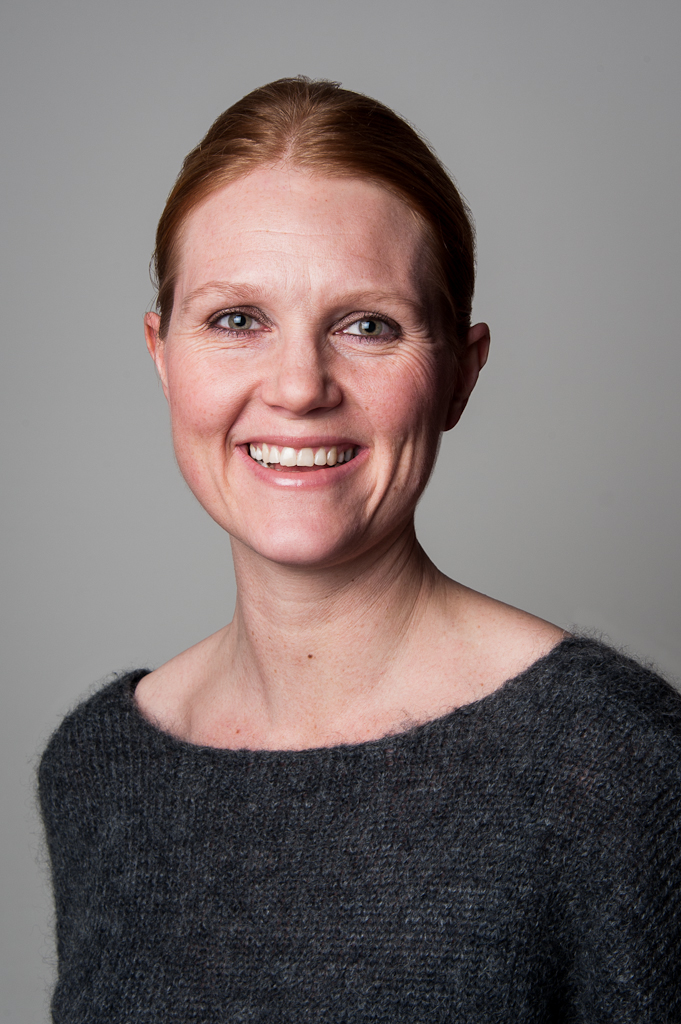MEMBERS






Worlding Northern Art (WONA) is a research group at the Faculty of Humanities, Social Sciences and Education of UiT The Arctic University of Norway. Its goal is to strengthen research in art history and visual culture in Northern Norway and the Circumpolar North, and to incorporate curatorial practices and artistic research.
WONA's interests and activities are oriented towards both new and traditional art historical objects, media and research fields. Theoretically and methodically WONA operates in the contact zone between different disciplines including anthropology, history, religious studies, sociology, gender studies and indigenous studies. Ongoing and upcoming projects within the group demonstrate a diversity in terms of research material, geographical scope and historical parameters. What brings these projects together, however, is a common engagement in the fields of Arctic visual culture, Sami art, exhibition practices and museum institutions.
At the core of Worlding Northern Art is the understanding of art as an important social and political factor which we see as our mission to explore and disseminate. The concept worlding is useful in discussions of art in relation to place and identity, ecology and ways of life, and our understanding and acquisition of knowledge.
Our research relates to the following topics:
Art and identity: regional, national, transnational and global arts and visual culture; art and indigenous people. Art and ecology: the significance of art in relation to "the three ecologies": the environmental, the social and human ecology; art and Northern living. Art and science: art as a form of knowledge; artistic research versus academic research; performative methods
In recent years, the term worlding has become a key concept and way of thinking in (post)humanistic research in disciplines such as philosophy, literature, anthropology, cultural geography and cultural studies. The meaning of the term is ambiguous, however, and can be linked to quite different theories and theoreticians, from Heidegger and Goodman to Spivak and Haraway. Despite its ambiguity, or diversity, the term/concept worlding unites our research which is characterized by a broad entry into a large field.
When applied to art historical research, worlding may give an in-depth and challenging understanding of the value of art in itself, at its place, and as a transnational phenomenon in the global world. The concept may serve as a tool for better understanding totalities and connections while at the same time it may function as a way of criticizing historically transmitted understandings and truths. In addition, worlding may be applied when identifying the often problematic ways in which "world-making" happens.
WONA intends to actualize northern art and art practices (historically as well as contemporary), and to highlight these as significant. Northern art and art practices are not marginal, and they do not take place "at the edge of the world". In this context, worlding considers art as world-making, the world that art itself sets up, and which invites sensation, experience and thinking.
WONA intends to criticize representation, historical writing and research on art in the Circumpolar North. In this connection, worlding is understood as different forms of contextualization and/or opinion-writing that invite critical assessment.
In addition to criticizing established humanistic research and dissemination practices, participants in WONA will explore curatorial and artistic activities as a research strategy and art as a form of knowledge. This entails a dissemination of our results that moves beyond “the scientific article” to also encompass exhibitions, art laboratories, performative activities, public conversations and statements.






Head of Research Group
Elin Kristine Haugdal
Professor in Art History
Department of Language and Culture
Faculty of Humanities, Social Sciences and Education
The Arctic University of Norway, Tromsø
elin.haugdal@uit.no
Recent Publications by WONA Members (in chronological order):
Fjellestad, Marthe Tollnes. 2025 (forthcoming). Små grep kan gjøre stor forskjell: Etisk veileder for tilgjengeliggjøring og formidling av samisk fotografi [Small Changes, Great Difference: Ethical Guide for Publishing and Communicating Sámi Photography]. Commissioned by Norges museumsforbund and Samisk museumslag.
Fjellestad, Marthe Tollnes, Elin Haugdal, Stephanie von Spreter, and Hanne Hammer Stien. 2025. “Introduction to Special Issue Photography and Care.” photographies 18 (1). https://doi.org/10.1080/17540763.2024.2435678
Stien, Hanne Hammer. 2025. “Drawing Sovereignty: The Museum Work of Sámi Artist Ánddir Ivvár Ivvár/Iver Jåks.” Critical Arts 1: 1–23. https://doi.org/10.1080/02560046.2024.2438130
Fjellestad, Marthe Tollnes and Hanne Hammer-Stien. 2024. “Øko-bevisst fotografi: Fremveksten av nye praksiser og tenkemåter” [“Eco-Conscious Photography: The Emergence and Development of New Practices and Ways of Thinking”]. Periskop, no. 31, special issue Photography NOW! on photography and interdisciplinarity, edited by Mette Sandbye and Inger E. Bonde, 14–31.
Hansen, Hanna Horsberg. 2024. "Dissensus og subjektivering: Refleksjoner rundt kvalitet i kunstnerutdanning." UNIPED2-24: 91–100. https://hdl.handle.net/10037/33625
Haugdal, Elin Kristine. 2024. “Photography, Plants, and Care in a Changing Arctic.” photographies 18 (1): 41-64. https://doi.org/10.1080/17540763.2024.2392144
Haugdal, Elin Kristine. 2024. “Dáiddakarta. Cartography in Contemporary Sámi Art Practices.” JoLMA The Journal for the Philosophy of Language, Mind and the Arts 5 (1): 117-144. http://doi.org/10.30687/Jolma/2723-9640/2024/01/006
Haugdal, Elin Kristine. 2024. “Monumental Duodji? Craft and Care in Outi Pieski’s Public Artworks.” The Vessel Magazine 8.
Haugdal, Elin Kristine. 2024. “Home: Learning from Sápmi.” In Towards Home / Ḋᴏᖔᖃᖐᔭ / Ruovttu Guvlui. Inuit and Sámi Placemaking, edited by Joar Nango, Tanya Patridge, Juho Piirainen, and Rhiannon Ruiz. Montreal: Canadian Centre for Architecture.
Stien, Hanne Hammer, and Cathrine Baglo. 2024. “Dealing with Nordic Colonialism: Agency and Othering in Two Art Projects Invoking Living Ethnographic Displays.” Third Text 2: 270–292. https://doi.org/10.1080/09528822.2024.2420553
Stien, Hanne Hammer. 2024. “Økobevissthet og fellesskapsfølelse: Fremveksten av en kvensk kunstbevegelse.” In Tuulessa – I vinden. Kvensk kultur i familier, kulturindustri og museer, edited by Trine Kvidal-Røvik, Stein Roar Mathisen, and Kjell Ole Kjærland Olsen, 293–317. Oslo: Universitetsforlaget. https://doi.org/10.18261/9788215067797-24-13
Stien, Hanne Hammer, and Marthe Tolnes Fjellestad. 2024. “Økobevisst fotografi: Fremveksten av nye praksiser og tenkemåter.” Periskop: Forum for kunsthistorisk debatt 31: 14–31. https://doi.org/10.7146/periskop.v2024i31.146553
von Spreter, Stephanie. 2024. "Destructed Environments, Gendered Spaces and Colonial Legacies: Contemporary Artistic Practices Sensing the Arctic and the Circumpolar North." Doctoral Thesis, Faculty of Humanities, Social Sciences and Education, UiT The Arctic University of Norway. https://hdl.handle.net/10037/35862
von Spreter, Stephanie. 2024. “Sensing Polar Ice Bodies.” In Communicating Ice through Popular Art and Aesthetics, Palgrave Studies in Media and Environmental Communication, edited by Anne Hemkendreis and Anna-Sophie Jürgens, 123–142. Cham: Springer International. https://doi.org/10.1007/978-3-031-39787-5
Fjellestad, Marthe Tollnes and Hanne Hammer-Stien. 2023. “Fotografisk samtidsdokumentasjon i museene: behov for nye praksiser?” [“Contemporary Documentation Photography in Museums: A Need for New Practices?”]. By og Bygd, special issue on Norwegian Photographic History 1940–2011, 139–165. Oslo: Norsk Folkemuseum.
Fjellestad, Marthe Tollnes. 2022. “Photography in the Canadian Arctic Archipelago during the First International Polar Year, 1882–1883.” Scientia Canadensis 44, no. 1, special issue Photography: Science, Technology and Practice, edited by Joan M. Schwartz, 50–67.
Fjellestad, Marthe Tollnes. 2022. “Å vise vanskelige bilder. Fotografier fra Sydspissen fangeleir i Tromsø, 1945” [“Showing Difficult Images: Photographs from the Sydspissen Prison Camp in Tromsø, 1945”]. Mediehistorisk tidsskrift, special issue on Norwegian Photographic History 1940–2011, no. 2/2021, vol. 18, no. 36, 16–31.
Grini, Monica, Elin Kristine Haugdal, and Hanne Hammer Stien. 2022. “Nordlige verdensgjøringer.” Kunst og kultur 105 (2-3): 70–73. https://doi.org/10.18261/kk.105.2.1
Hansen, Hanna Horsberg. 2022. "Fotografier i Emilie Demant Hatts bok Med Lapperne i Højfjeldet: Fotografiske møter, biografiske inskripsjoner og ‘våre’ historier." Kunst og kultur 105 (2–3): 129–141. https://hdl.handle.net/10037/26863
Hansen, Hanna Horsberg. 2022. "The Sámi Museum in Karasjok: A Story of Resistance." In A Cultural History of the Avant-Garde in the Nordic Countries Since 1975, edited by Benedikt Hjartarson, Camilla Skovberg Paldam, Laura Luise Schultz, and Tania Ørum, 415–432. Leiden/Boston: Brill. http://dx.doi.org/10.1163/9789004515956_029
Stien, Hanne Hammer. 2022. “Dagliglivsfotografier og verdensgjøring i Inuuteq Storchs Porcelain Souls.” Kunst og kultur 2-3: 142–157. https://doi.org/10.18261/kk.105.2.7
von Spreter, Stephanie. 2022. “Pia Arke and 'Arctic Hysteria': Visual Repatriation and the Problematics of a 'Lost' Artwork.” Kunst og kultur 105 (2-3): 87-102. https://doi.org/10.18261/kk.105.2.3
Haugdal, Elin Kristine. 2022. “Belonging(s).” In Public Memory, Public Art – Reflections on Monuments and Memorial Art Today, edited by Annika Enqvist, Karolina Modig, Rebecka Katz Thor, and Joanna Zawieja, 209–215. Stockholm: Art and Theory Publishing.
Haugdal, Elin Kristine. 2022. “Samisk arkitektur i norsk Byggekunst / Sámi arkitektuvra áigečállagis Byggekunst.” In Huksendáidda – samisk arkitektur / Huksendáidda – Arkitektuvra Sámis, edited by Bente Aass Solbakken, 90–113. Oslo: Nasjonalmuseet Arkitektur, Orkana forlag.
von Spreter, Stephanie. 2021. “Feminist Strategies for Changing the Story: Re-Imagining Arctic Exploration Narratives through (the Staging of) Photographs, Travel Writing, and Found Objects.” Journal of Aesthetics and Culture 13 (1). https://doi.org/10.1080/20004214.2021.1997462
Haugdal, Elin Kristine. 2021. “New Architecture in Author Museums and Centres.” In Transforming Author Museums: From Sites of Pilgrimage to Cultural Hub, edited by Ulrike Spring, Johan Schimanski, and Thea Aarbakke. New York/Oxford: Berghahn Books. https://doi.org/10.3167/9781800732438
Aarekol, Lena, Marit Anne Hauan, and Hanne Hammer Stien. 2020. “Exhibiting the Arctic: A Humanities-Based Analysis of Climate Change Exhibitions at the Polar Museum in Tromsø.” In Library and Information Studies for Arctic Social Sciences and Humanities, edited by Marthe Tolnes Fjellestad and Spencer Acadia, 255–277. London: Routledge.
Hansen, Hanna Horsberg. 2020. "The Sami Art Museum: There Is NO – or Is There?" Norlit 46: 222–241. http://dx.doi.org/10.7557/13.5450
Haugdal, Elin Kristine. 2020. “Photographs of the Soviet Settlements on Svalbard.” Nordlit 45: 107-141. https://doi.org/10.7557/13.5029
Maxwell, Kate, Lilli Mittner, and Hanne Hammer Stien. 2020. “Conceptualizing the North.” Nordlit 46: 1–11. https://doi.org/10.7557/13.5703
Jonvik, Merete, Eivind Røssaak, Hanne Hammer Stien, and Arnhild Sunnanå. 2020. Kunst som deling. Delingens kunst. Bergen: Fagbokforlaget.
Fjellestad, Marthe Tollnes. 2019. “To See Oneself in Those Who Were: Sophus Tromholt’s Portrait of Inger Andersdatter Bæhr.” In Faces between Fact and Fiction: Studies on Photographic Portraits in Norway, edited by Mikkel B. Tin, 103–139. Oslo: Novus Press.
Hansen, Hanna Horsberg. 2019. "Pile o'Sápmi and the Connections Between Art and Politics." Synnyt/Origins: Finnish Studies in Art Education 1: 81–96. https://wiki.aalto.fi/pages/viewpage.action?pageId=151504259